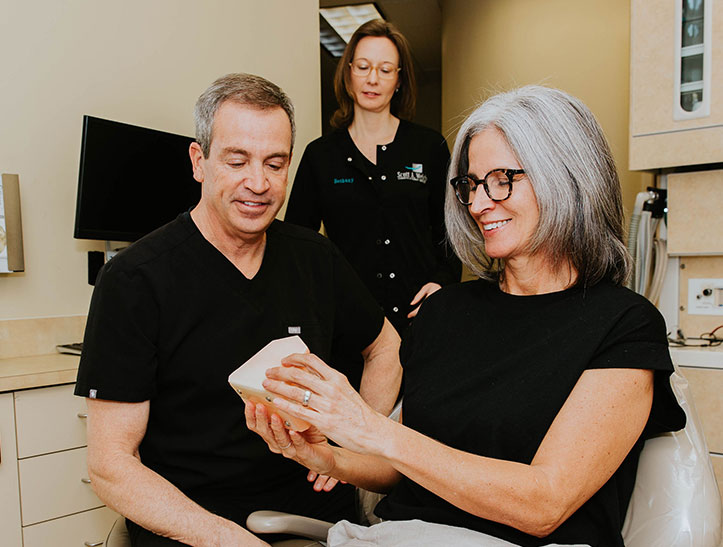DENTAL SERVICES
COSMETIC DENTISTRY


 While your teeth are very strong and durable, there are instances where they may suffer minor damage that requires attention. Tooth bonding is an excellent option for reconstructing chipped teeth, filling gaps between teeth, and changing the shape of teeth (such as lengthening a tooth shorter than the rest).
While your teeth are very strong and durable, there are instances where they may suffer minor damage that requires attention. Tooth bonding is an excellent option for reconstructing chipped teeth, filling gaps between teeth, and changing the shape of teeth (such as lengthening a tooth shorter than the rest).
Surprisingly, it's not that difficult to chip a tooth. You can chip or crack a tooth on almost anything, and we're here to help keep your smile looking its best. However, if you have tooth decay, bruxism, or an increased amount of acids that eat away at the tooth enamel, you may be more prone to cracking or chipping a tooth.
The bonding material is a composite resin applied to the damaged part of the tooth and matches the color of your tooth, so it looks like your natural tooth. Tooth bonding is not only good for regaining a healthy smile but also for maintaining good oral health and preventing further damage to the affected tooth.
You don't need to worry about tooth bonding being a significant dental procedure. It's typically a short process that will repair your tooth or teeth in a short period of time. Dr. Welch will help you select a proper resin color close to your natural tooth color so the bonding agent will look as natural as possible. He'll then prepare your tooth and apply the bond to your tooth, mold it to repair your tooth, set it with a UV light, and you'll be on your way.
Tooth bonding doesn't require aftercare, except for common sense items such as being careful to avoid things that will damage the bond or damage/chip/crack your tooth again. An essential piece of information to keep in mind is that if you stain your bond or whiten your teeth, you may see a difference in the color of your teeth vs. the bond. However, we may be able to make the color not as noticeable by applying a very thin layer of bond over the tooth.

If you have any questions, or would like to make an appointment, call our professional dental team at (336) 288-4499.